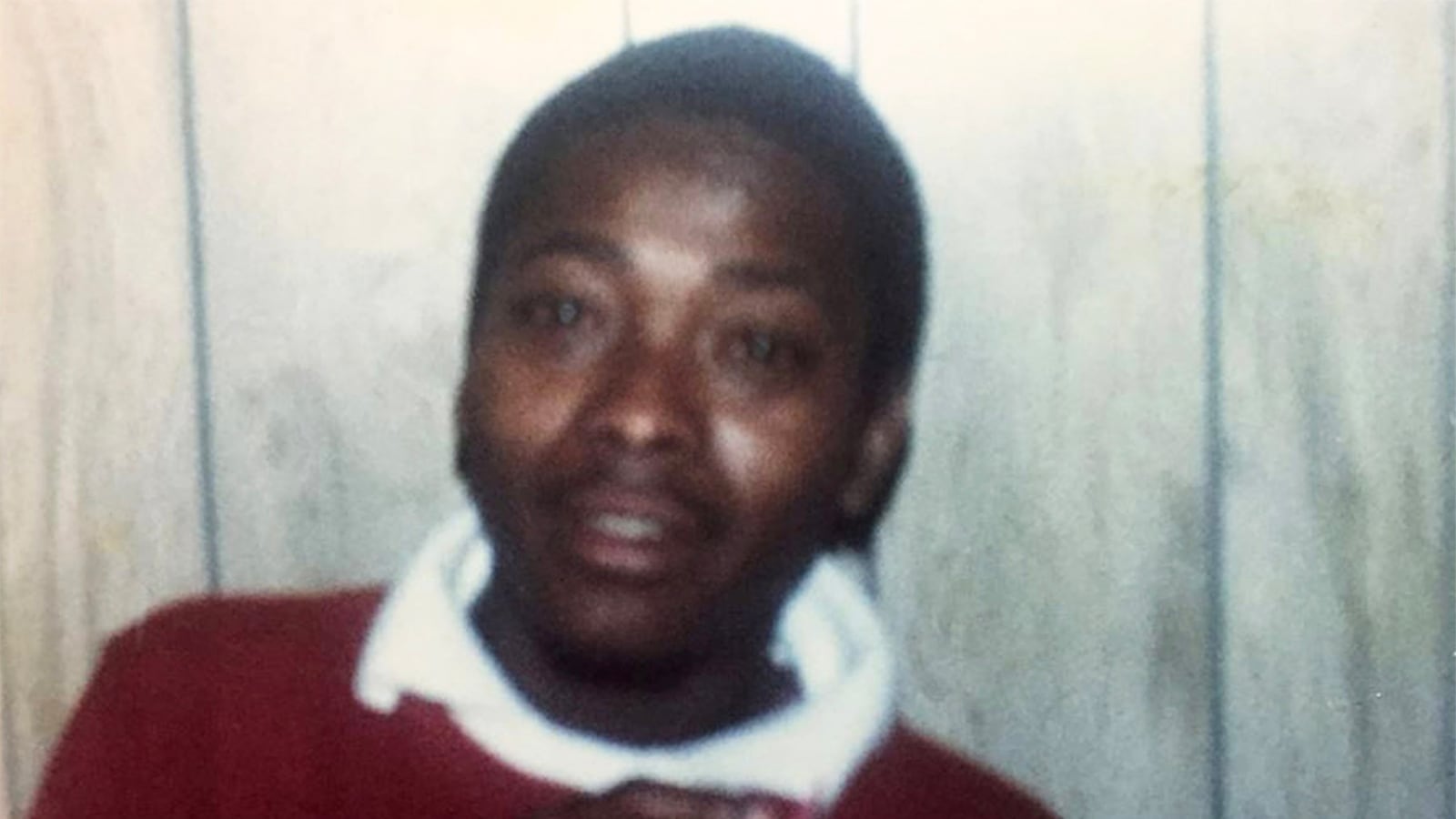On Oct. 9, 1983, hunters in Sunny Side, Georgia, stumbled upon the mutilated body of Timothy Coggins, a “fun-loving” 23-year-old black man. He’d been stabbed around 30 times—and his ripped blue jeans were covered in blood and mud, the result of being chained to the back of a pickup truck and dragged down a dusty rural road.
“The crime scene speaks of sending a message,” Marie Broder, the Griffin Judicial Circuit chief assistant district attorney, said last week in a Spalding County courthouse on the first day of Frankie Gebhardt’s murder trial. “Rage fueled this murder.”
But rage over what? That remained an unanswered question for more than 30 years, until cold-case investigators recently reopened Coggins’ case, which was closed after a hasty probe that lasted only a few months. The murder was the result of racial animus—and prejudice played a role in the shoddy investigation, as well, according to prosecutors. “They didn’t care about Timothy Coggins,” Broder explained.
On Tuesday, Gebhardt was sentenced to life plus 20 years in prison after being found guilty on all five counts against him, including malice murder, felony murder, aggravated battery, aggravated assault, and concealing the death of another.
“Hopefully, sir, you’ve stabbed your last victim,” Spalding County Superior Court Judge W. Fletcher Sams said.
Gebhardt allegedly killed Coggins with his brother-in-law, Bill Moore Sr., who has also been charged in the murder but will not go on trial until October. They targeted Coggins because he was black and was “socializing” with a white woman, prosecutors have said.
“This has been taxing, not only to the Coggins family but the Gebhardt family as well. It has been 34 years for us to be here and now we can go back to Tim’s grave and say, ‘you can now rest in peace,’” the victim’s niece, Heather, said after the verdict was read.
The state’s case wasn’t an easy one to prove: About half of the physical evidence from 1983 went missing following an investigation that Broder called “horrific, shameful, incomplete.” There was also the problem of inconsistent statements from witnesses, and the fact that most of the men who claimed Gebhardt confessed to the murder are still in prison.
“Although much has changed over 34 years, one thing has remained constant: that the rage towards the African-American race still exists in that man’s heart,” Broder said of Gebhardt.
A key witness, Christopher Vaughn—who only recently claimed he saw Coggins get into a car with Gebhardt, Gebhardt’s girlfriend, and Moore just hours before he was discovered dead—is a convicted child molester, a detail the defense pounced on throughout trial.
According to prosecutors, Coggins—who’d recently been dating a white woman—went to the People’s Choice Club in Griffin, Georgia, on the evening of Oct. 7 to “have a good time.” His sister, Telisa, testified at trial that she last saw her brother alive when he was leaving the club with a white man. At the club, he’d danced with a white woman, she said.
Another witness, Jesse Gates, said he dropped Coggins off at the club—and was alarmed to see three white people outside. On the way over, Coggins had mentioned “this Caucasian girl.”
“I said, ‘Now Tim, if I told you once, I told you twice, you need to be careful about dating Caucasian women in Griffin,’ and he said, ‘Mr. Jesse, you’re just old-fashioned,’” Gates testified.
Vaughn, who was 10 years old when he found Coggins’ body with his dad while out hunting, said the slain man was involved with Gebhardt’s girlfriend, and that’s why he was killed, The Atlanta Journal-Constitution reported. He also claimed to overhear Gebhardt confess, saying, “they had killed the man we had found over there… Him and Bill Moore. He was in a good mood.”
In her opening arguments, Broder said Gebhardt confessed to “multiple people” but never referred to Coggins by name, simply calling him an “n-word.”
“He brought up, did we find the body on the power line? I said ‘yeah,’” witness William Sanders told jurors, according to the Associated Press. “And he said he and Bill put him there. He said Bill killed him, and he tied chains to his feet and drug him on the power line.”
Gebhardt’s defense urged jurors to note the lack of physical evidence in the case—and question the motives of the witnesses who testified. Broder encouraged jurors to deliver a verdict “that is just and right.”
“You alone can atone for the sins of the past,” she said.






